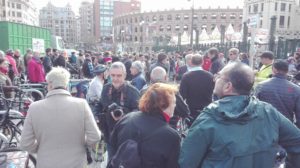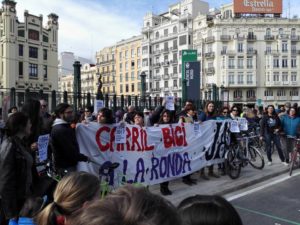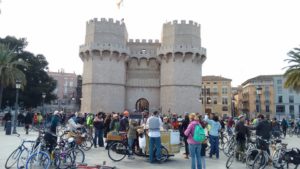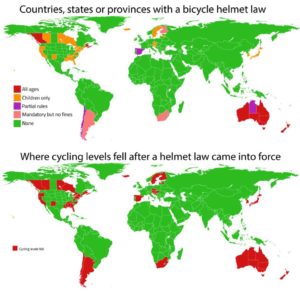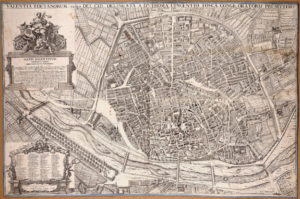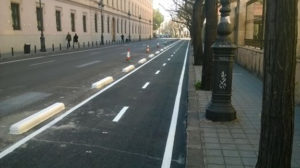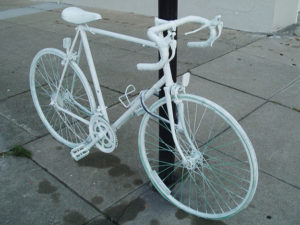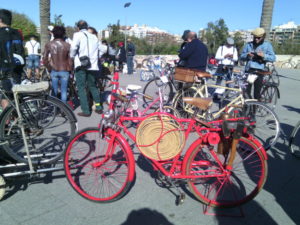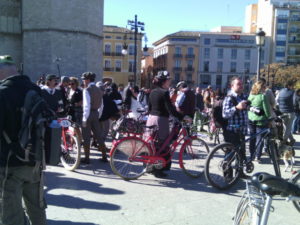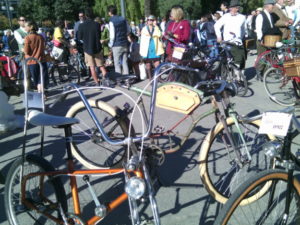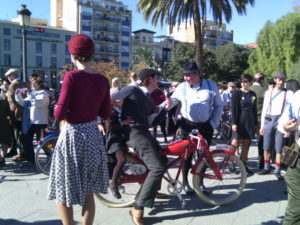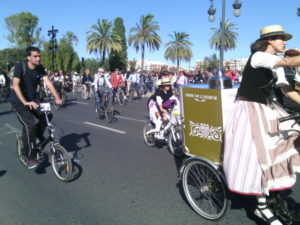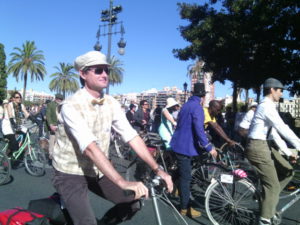One of the main problems when surveys are done regarding urban mobility is the conflict between bikers and pedestrians. Riding on sidewalks (outside bike-lines) is fined in a lot of countries. The bike is logically considered as a vehicle and thus it should move on pavement or bike-lines. Bikers who ride their bikes on sidewalks probably do it because:
– They act as pedestrians, following the same paths and mental schemes as if they were walking. But not, they are riding and this can cause problems due to the higher speed than human step and/or the potential accident caused by the fact that it is an almost noiseless transport.
– This kind of bikers also can present fear to ride on pavement. This fear is understandable in some cases specially in avenues in which cars and motorcycles do not usually respect the speed limit. This reason makes it difficult to convince those bikers to move to the pavement since the more bikers on it, the more calmed traffic we will enjoy. In order to avoid going around in circles, government actions on sustainable mobility should calm traffic and, at the same time, bikers should take the pavement.
